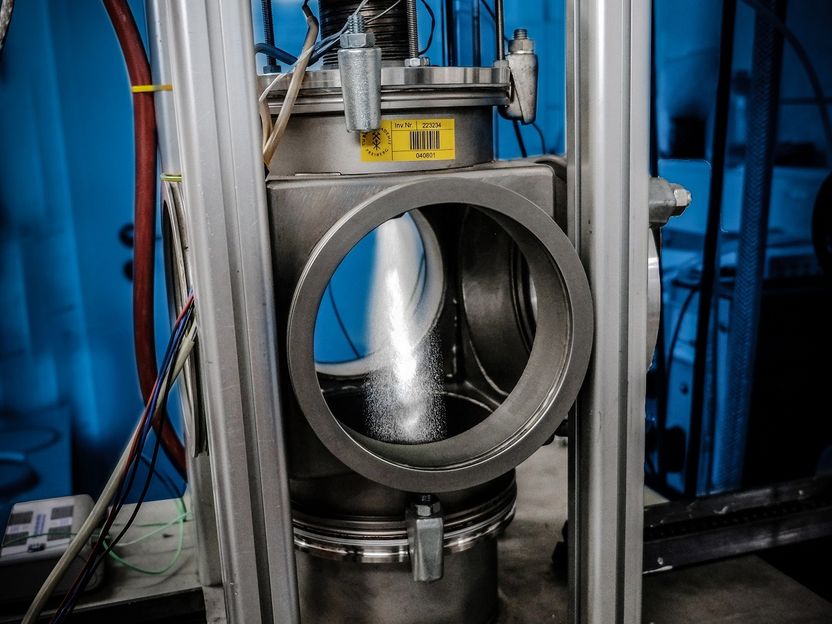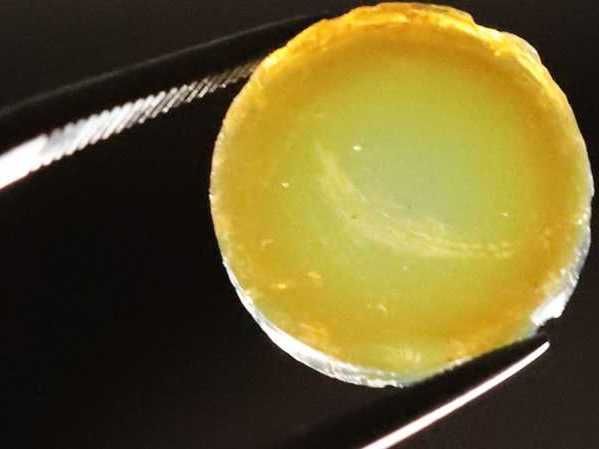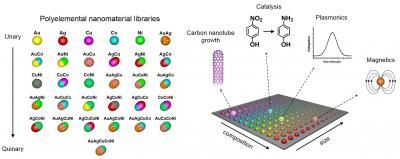Hybrid nanomaterials bristle with potential
By combining multiple nanomaterials into a single structure, scientists can create hybrid materials that incorporate the best properties of each component and outperform any single substance. A controlled method for making triple-layered hollow nanostructures has now been developed at KAUST. The hybrid structures consist of a conductive organic core sandwiched between layers of electrocatalytically active metals: their potential uses range from better battery electrodes to renewable fuel production.
Although several methods exist to create two-layer materials, making three-layered structures has proven much more difficult, says Peng Wang from the Water Desalination and Reuse Center who co-led the current research with Professor Yu Han, member of the Advanced Membranes and Porous Materials Center at KAUST. The researchers developed a new, dual-template approach, explains Sifei Zhuo, a postdoctoral member of Wang's team.
The researchers grew their hybrid nanomaterial directly on carbon paper--a mat of electrically conductive carbon fibers. They first produced a bristling forest of nickel cobalt hydroxyl carbonate (NiCoHC) nanowires onto the surface of each carbon fiber. Each tiny inorganic bristle was coated with an organic layer called hydrogen substituted graphdiyne (HsGDY).
Next was the key dual-template step. When the team added a chemical mixture that reacts with the inner NiCoHC, the HsGDY acted as a partial barrier. Some nickel and cobalt ions from the inner layer diffused outward, where they reacted with thiomolybdate from the surrounding solution to form the outer nickel-, cobalt-co-doped MoS2 (Ni,Co-MoS2) layer. Meanwhile, some sulfur ions from the added chemicals diffused inwards to react with the remaining nickel and cobalt. The resulting substance had the structure Co9S8, Ni3S2@HsGDY@Ni,Co-MoS2, in which the conductive organic HsGDY layer is sandwiched between two inorganic layers.
The triple layer material showed good performance at electrocatalytically breaking up water molecules to generate hydrogen, a potential renewable fuel. The researchers also created other triple-layer materials using the dual-template approach
"These triple-layered nanostructures hold great potential in energy conversion and storage," says Zhuo. "We believe it could be extended to serve as a promising electrode in many electrochemical applications, such as in supercapacitors and sodium-/lithium-ion batteries, and for use in water desalination."
Original publication
Most read news
Original publication
Sifei Zhuo, Yusuf Shi, Lingmei Liu, Renyuan Li, Le Shi, Dalaver H. Anjum, Yu Han & Peng Wang; "Dual-template engineering of triple-layered nanoarray electrode of metal chalcogenides sandwiched with hydrogen-substituted graphdiyne"; Nature Comm.; 2018
Topics
Organizations
Other news from the department science

Get the chemical industry in your inbox
By submitting this form you agree that LUMITOS AG will send you the newsletter(s) selected above by email. Your data will not be passed on to third parties. Your data will be stored and processed in accordance with our data protection regulations. LUMITOS may contact you by email for the purpose of advertising or market and opinion surveys. You can revoke your consent at any time without giving reasons to LUMITOS AG, Ernst-Augustin-Str. 2, 12489 Berlin, Germany or by e-mail at revoke@lumitos.com with effect for the future. In addition, each email contains a link to unsubscribe from the corresponding newsletter.
Most read news
More news from our other portals
Last viewed contents
Luis_E._Miramontes
Haplogroup_E_(Y-DNA)

New process for natural-based microparticles in cosmetics - Research against microplastics

Speeding up extreme fast charging capability in lithium-ion batteries - “Extreme” fast charging, high energy density, and cycle life are the “holy grail” of features that the automobile industry seeks out in batteries

Pioneering plasma-catalytic process for CO2 hydrogenation to methanol under ambient conditions





























































